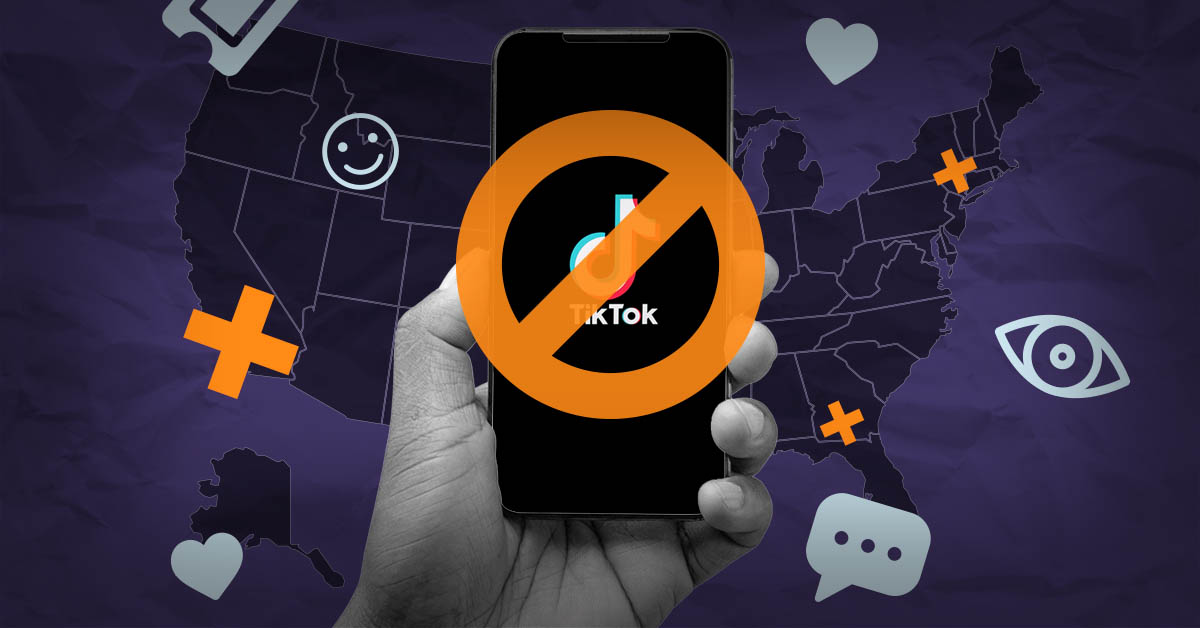What Happens to PPC if TikTok Gets Banned?

As TikTok continues to face legal challenges in the United States, the future of the platform remains uncertain. The short-form video app has become a powerhouse for content creators and advertisers alike, but if a ban were to go into effect, it would have significant repercussions for the world of paid media. In this blog post, we will discuss the current state of TikTok’s legal challenges, how media spend might shift to other platforms, and why the TikTok style of video content will remain popular and relevant regardless of the app’s fate.
TikTok’s Legal Challenges in the USA
In recent years, TikTok has faced a series of legal challenges in the United States, primarily over concerns related to national security and data privacy. The app, which is owned by the Chinese company ByteDance, has been accused of potentially sharing user data with the Chinese government, although the company has consistently denied these claims.
Recently, TikTok’s CEO made an appearance before the US Congress, addressing concerns and providing further insight into the company’s data practices and commitment to user privacy. Despite several executive orders issued by the previous administration seeking to ban or restrict the app, TikTok has managed to remain available in the US market through a series of legal victories and appeals. However, as the regulatory landscape continues to evolve, the possibility of a ban remains a lingering threat.
The Redistribution of Media Spend
If a TikTok ban were to occur in the United States, advertisers would be forced to shift their media spend to alternative platforms to reach their target audiences. Two major contenders for capturing this redirected spend are YouTube Shorts and Meta Ads. Let’s explore each platform in more detail:
- YouTube Shorts: YouTube’s response to TikTok’s popularity, YouTube Shorts, offers a platform for short-form video content within the YouTube app. With a massive user base and the advantage of Google’s advertising infrastructure, YouTube Shorts could see a significant influx of advertisers reallocating their TikTok budgets.
- Meta Ads: Meta, formerly known as Facebook, has made significant strides in expanding its advertising offerings, particularly in the realm of short-form video content. Instagram Reels, a feature launched specifically to compete with TikTok, has become a key player in Meta’s advertising ecosystem. With platforms such as Instagram Reels and Facebook Watch, Meta Ads provides advertisers with multiple avenues to reach their audience.
Snapchat’s Role in Paid Media
Another platform that could potentially benefit from a TikTok ban is Snapchat. Known for its disappearing messages and unique filters, Snapchat has long been popular among younger audiences. While the platform has made efforts to expand its advertising options, it has seen limited success and adoption among performance marketers compared to other platforms like YouTube and Meta Ads.
This can be attributed to factors such as less granular targeting options, lower overall reach, and a less developed ad platform. However, with the potential redistribution of media spend from TikTok, Snapchat may have an opportunity to refine its advertising offerings and attract more performance-focused marketers.
The Enduring Popularity of TikTok-Style Video Content
Even if TikTok were to be banned in the United States, the impact of its unique style of short, engaging video content would continue to shape the digital marketing landscape. The popularity of this format can be attributed to a few key factors:
- Easily digestible content: The short-form nature of TikTok videos makes them easy to consume, catering to the decreasing attention spans of online audiences.
- Creative expression: TikTok has fostered a culture of creativity and self-expression, allowing users to showcase their talents and personalities in innovative ways.
- Viral potential: The platform’s algorithm promotes content with high engagement, creating the possibility for users and brands to achieve viral success rapidly.
Given the sustained appeal of this content format, it’s likely that other platforms will continue to incorporate similar features and functionality to meet user and advertiser demands.
Preparing for the Future of Paid Media
While the possibility of a TikTok ban in the United States remains uncertain, it’s essential for advertisers to stay informed and be prepared to adapt their strategies accordingly. Here are some key steps to consider:
- Diversify your advertising portfolio: Don’t rely solely on one platform for your paid media campaigns. Instead, allocate your budget across multiple channels, such as YouTube, Meta Ads, Twitter, and Pinterest, to ensure you can still reach your target audience if one platform becomes unavailable.
- Keep an eye on emerging platforms: Stay up-to-date on new and emerging social media platforms that might offer similar advertising opportunities to TikTok. By being an early adopter, you could potentially gain a competitive advantage and establish a strong presence before the market becomes saturated.
- Refine your video content strategy: Regardless of the platform, short-form video content is here to stay. Ensure your content strategy embraces this format by producing engaging, shareable videos that resonate with your target audience. Experiment with different styles, formats, and messaging to discover what works best for your brand.
- Stay informed on regulatory developments: Keep a close eye on any legal and regulatory developments related to TikTok or other platforms you’re investing in. Be prepared to adjust your marketing strategies as needed to comply with new regulations and maintain your brand’s reputation.
- Invest in data privacy and security: As privacy concerns continue to shape the digital marketing landscape, it’s essential to prioritize data privacy and security in your marketing efforts. Ensure your campaigns are compliant with data protection regulations and communicate your commitment to privacy with your audience to build trust.
- Leverage influencer marketing: As TikTok-style content continues to dominate social media, influencers can play a vital role in your marketing strategy. Collaborate with influencers who align with your brand values and have a strong presence on various platforms to ensure maximum reach and impact.
- Monitor campaign performance: Regularly track and analyze your campaign performance across all platforms to identify trends, optimize your ad spend, and ensure you’re achieving your desired results. Use data-driven insights to make informed decisions about your marketing strategy moving forward.
Conclusion
The potential ban of TikTok in the United States highlights the importance of being prepared to adapt your paid media strategies to an ever-changing digital landscape. By diversifying your advertising portfolio, embracing short-form video content, and staying informed about regulatory developments, you can ensure your brand remains agile and well-positioned for success in the world of paid media, regardless of what the future holds for TikTok.












